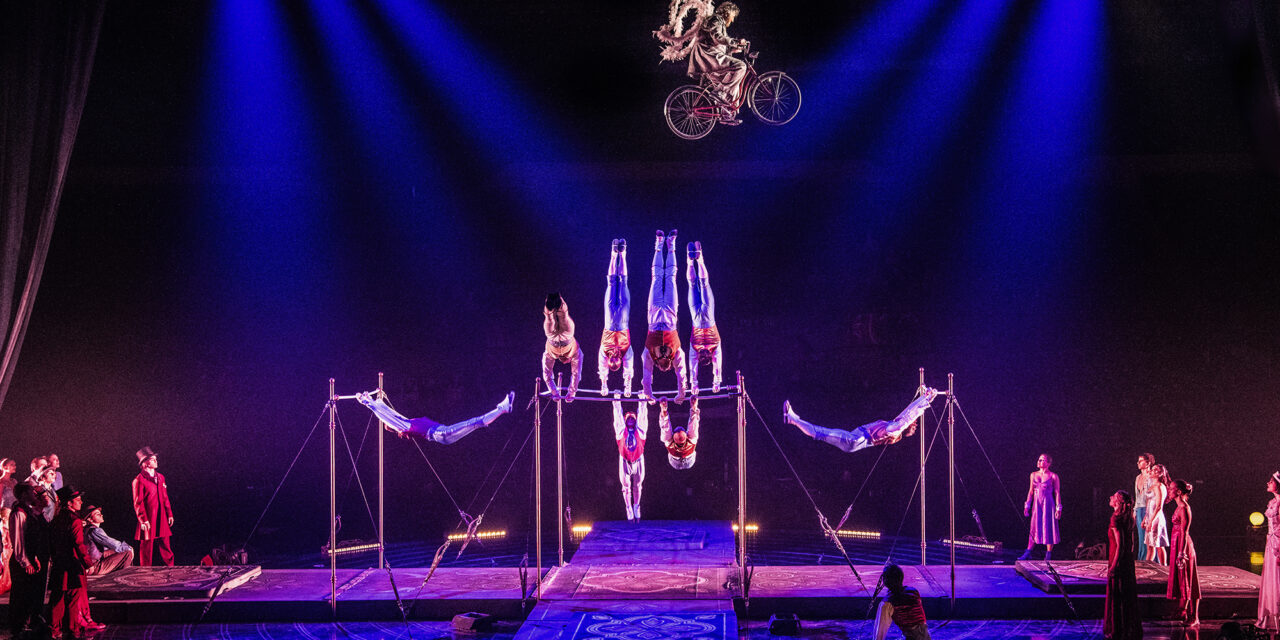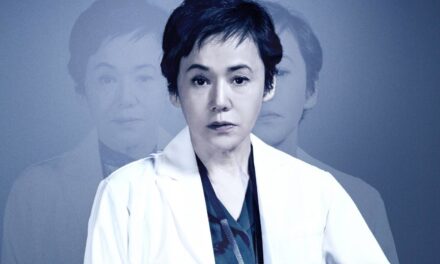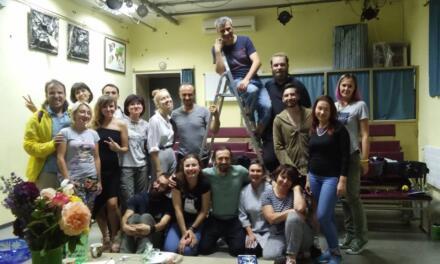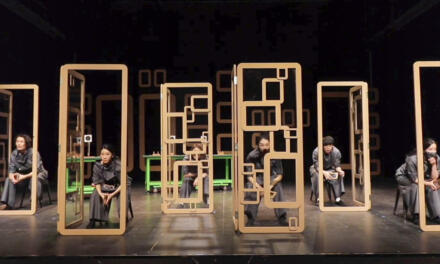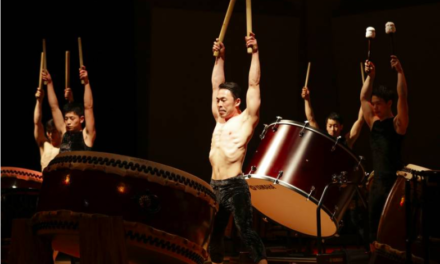To audiences around the world, Cirque du Soleil is a must-see entertainment with mesmerizing scenery, unforgettable makeup and costumes, and borderline superhuman artistic skills on full display. To performers, technicians, designers and backstage crew members, Cirque is a dream-job that guarantees as many challenges as it does rewards. In our conversation on the opening day of Cirque du Soleil’s touring arena show Corteo in Boston, the show’s publicist Maxwell Batista shares some of the insights on how the show of this proportion is created and sustained; one of Corteo’s performers, Betsy Zander, describes her experience in being part of Cirque du Soleil family.
Maxwell Batista:
This is the first time Corteo is in Boston. One of the most unique things about this show is that you see real people on stage, instead of [stylized] characters. It helps identify with the characters and make connections with the themes that happen in real life. [On the technical side], this show is unique in how the stage is set up. This is an Arena show, and yet people [audiences] are sitting on both sides of the stage. It creates an intimate environment. It doesn’t matter where you sit, you have a great view of the show.
We have 52 performers from 18 different countries on this show, which is more than the usual number for a touring show. As for the technical personnel, we have about a hundred people traveling with the show. Except for the big cities like Boston, we don’t spend more than one week in a town. Imagine: we on Tuesday, we set up the stage; Wednesday is the premiere; Sunday after the show they pack everything in 3.5 hours. We had a record – in Quebec City, we packed everything in three hours and five minutes. Twenty trucks, 600 road cases, after two shows – it’s intense. It’s beautiful to see who organized everyone is backstage.
IY: How long does it usually take to conceive, design, rehearse, and produce a Cirque show?
MB: It usually takes about two years between the conception of the show and the premiere. The performers start training six months before the opening. The group of designers creates everything: makeup, costumes, set, lighting, music. Corteo started in 2005, and first premiered in Montreal. Toured the world for ten years visiting 19 different countries, 60 cities all over the world. In 2015 we closed the show in the big show format and spent two years adapting to Arenas. On the set of Corteo, everything is hanging from the ceiling; 272 pieces form the floor, it is like a puzzle. The big structure on top of the stage is called Patience because when they first created the show one of the stagehands said: “You guys had a lot of patience putting this thing together.” In March 2018 we premiered again in New Orleans. Boston is city number 56 on our North American tour. Usually in Arena show stays on the road for 4-5 years it really depends on the market.
IY: What is the mechanism that ensures continuity in style, structure, and content when a show reopens in a new format?
MB: This show is a little bit different. There are some new acts, like a suspended pole and the hula hoops act. We also have some of the people in the show who had been with Corteo since the beginning. Some performers are now coaches behind the scenes. To prepare the Arena adaptation of Corteo, multiple members of the original creative team returned, to help us keep the integrity and authenticity of the show but in a different performance space.
IY: Does Cirque explore the relationship between technology and live performance?
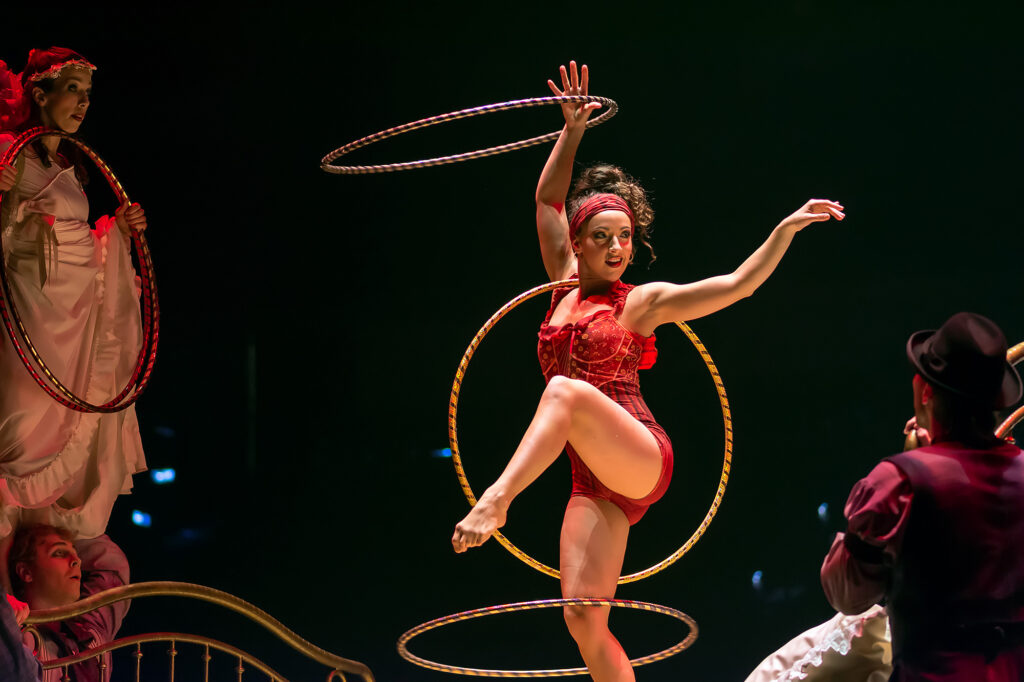
Photo courtesy of Cirque du Soleil
MB: Technology changed this show. We have 25 infrared cameras scanning everything that’s happening on stage. The trackers are attached to performers’ costumes, they send the signal to the cameras. The same with automation system: everything we use above in the air that helps us to fly people is different from before. Many shows [not Corteo] use projections. All our performers are challenged to be evolving and improving as professionals on in the off stage. We have creative studios in Montreal, where we try innovative practices. For example, designers use 3D printing to create costumes and accessories. We had a project where we tried incorporating drones in shows.
IY: If anything, digitization can offer access to those who can’t afford to see live performances. What is the Cirque’s vision for accessibility, diversity, and inclusion? The use of prosthetic and adaptive devices is changing the conversation around disability and performance. In particular, how does the company address growing awareness of the importance of inclusive theatre?
MB: A Cirque du Soleil employee is here because they can add to the company. They come from different backgrounds, lifestyles, cultures, languages. It does not matter how different you are, we want you to shine and show that extra skill that you have.
IY: How does Cirque ensure an efficient and healthy environment for intercultural collaborations?
MB: It is important for everyone to remember that they should be focused on what they do [in the company]. Whether they have athletic, singing, acting background, or if they went to a circus school, they spend their entire lives dedicating themselves to their craft. they take their work seriously. The company is taking very good care of their employees: traveling, transportation, catering, nutritionists, lodging. On this show, we have four stage managers, several performance coaches, and a series of professionals who ensure that the company members have all the tools that they need to succeed. Our desire to entertain the audiences is our focus. It crosses the barriers of languages and cultures.
IY: How do Cirque performers attain the undeniable stage chemistry?
Betsy Zander: There is no specific ritual or tradition that we all do. We just spend so much time together, and there is a lot of respect that goes into each and every relationship. Culturally, you can have differences, but respecting each other [and those differences] is how we make the show work. English is the language that everyone speaks, and the directions are given in English. Backstage, we have flags representing all our countries. There is no secret, you have to make it work.
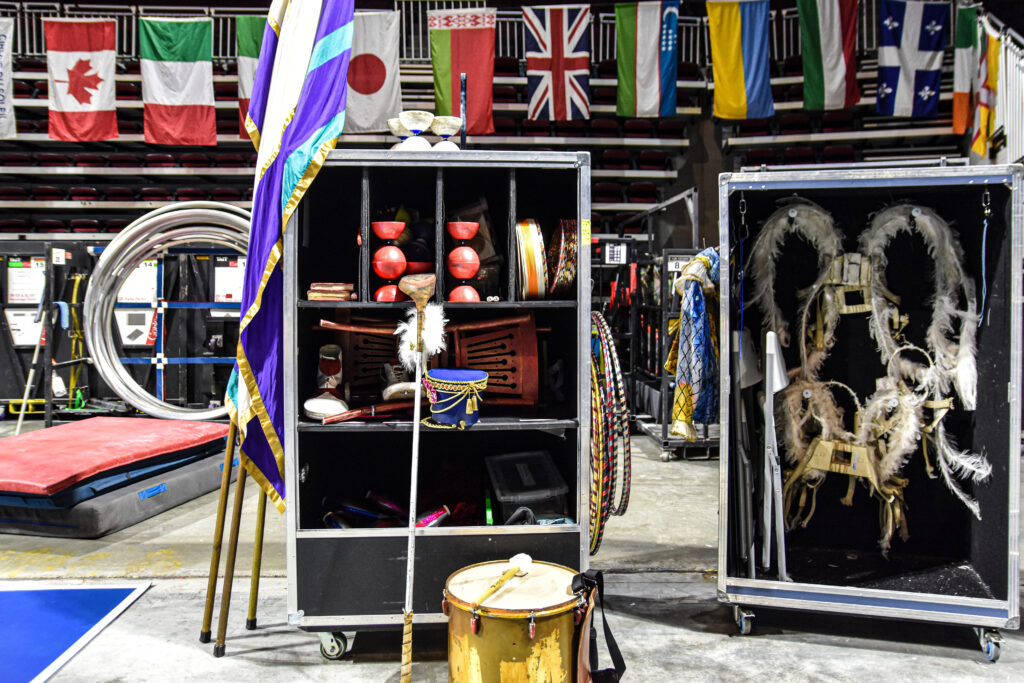
Backstage of “Corteo.” Photo: Irina Yakubovskaya
IY: In our digital world, what is the role of live performance?
BZ: I think there is a feeling that you get that you can’t get from a screen. No matter how beautiful a movie can be, if you see someone doing something incredible in person, there’s the feeling of awe and inspiration.
We all come from different backgrounds. I competed in artistic gymnastics growing up. To come from that background and break into a more artistic performing was tough. I went through a lot of classes that I signed up for because I wanted to get better. I think artistically you become more comfortable on stage the more you perform, so to grow into it and to discover that passion is within us. The ensemble building exercises are the foundation, but it is our responsibility as artists to continue it on.
IY: Not every performer in the world is able to become part of the Cirque du Soleil family. What advice do you have for aspiring circus performers?
BZ: Cirque is wonderful, and I am thankful to have a job. However, if it is not achievable for you, there are so many other beautiful companies. Having worked here, I really enjoy this space. If Cirque is your dream, just keep working at it, keep sending videos. Determination will get you very far.
This post was written by the author in their personal capacity.The opinions expressed in this article are the author’s own and do not reflect the view of The Theatre Times, their staff or collaborators.
This post was written by Irina Yakubovskaya.
The views expressed here belong to the author and do not necessarily reflect our views and opinions.

